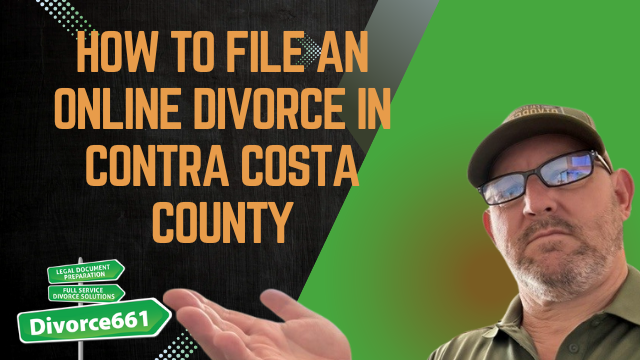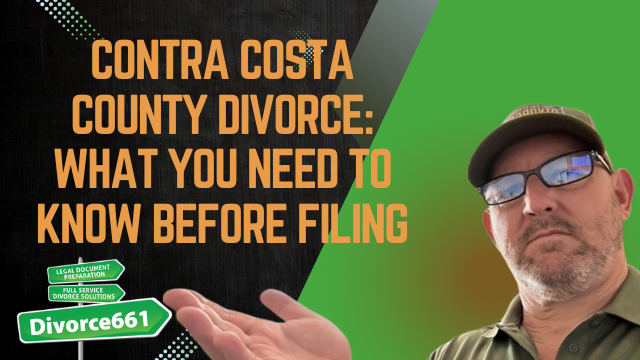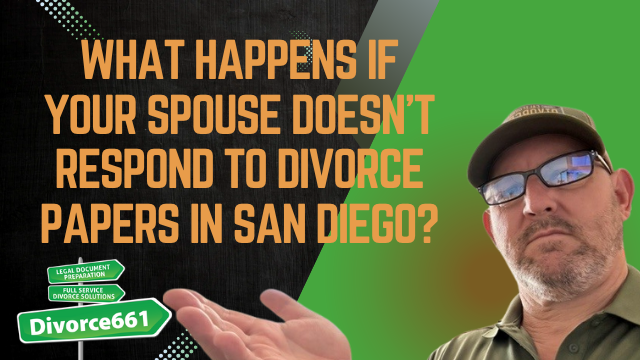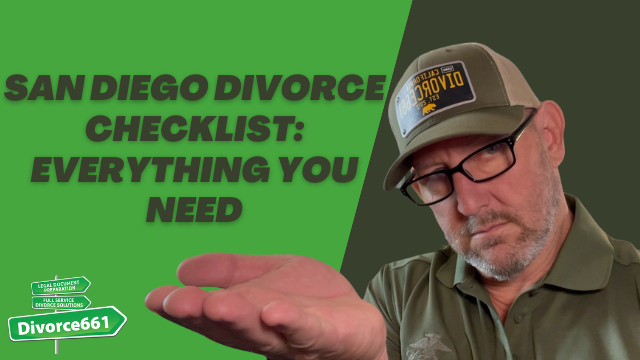How to Avoid Common Mistakes in Contra Costa County Divorces
I’m Tim Blankenship from Divorce661. If you’re filing for divorce in Contra Costa County, the paperwork can feel overwhelming — and small mistakes can stop your case in its tracks. In this article I’ll walk you through the most common errors I see, explain why they cause delays, and show how targeted, professional help can get your case approved quickly.
Why small mistakes matter
Court clerks reject filings for very specific reasons: missing attachments, incomplete financial disclosures, mismatched forms, or e-filing problems. Each rejection creates delay, extra cost, and stress. The good news is most of these issues are preventable when your paperwork is prepared correctly the first time.
Top paperwork mistakes that lead to rejections
- Incomplete or incorrect forms — Missing fields, outdated versions, or forms that don’t match your case details.
- Missing attachments — Required exhibits, schedules, or signatures left out of the packet.
- Skipped financial disclosures — Failure to include mandatory income and asset statements that courts require.
- Using generic templates — One-size-fits-all templates often don’t align with local court rules or your unique circumstances.
- E-filing errors — Improper file formats, incorrect filenames, or required metadata omissions that result in automatic rejections.
Why financial disclosures are critical
Financial disclosures are not optional. They give the court and the other party the information needed to resolve support, property division, and debt issues. Missing or incomplete disclosures commonly trigger continuances or outright rejections, prolonging the process and increasing fees.
The danger of relying on free online templates
Free templates can be a tempting shortcut, but they’re often generic and not tailored to California law or Contra Costa County procedures. Templates may omit county-specific attachments, use the wrong language for your situation, or fail to comply with e-filing requirements. That mismatch is precisely what causes many rejections.
Real client story: rejected twice, approved in a week
“A couple in Contra Costa tried free online templates and missed key attachments. Their paperwork was rejected twice. After hiring us, we customized their documents, filed everything correctly, and their judgment was approved in just one week.”
This example highlights two important points: (1) mistakes happen even when parties try to do things themselves, and (2) correcting the errors with experienced help can be fast and effective.
How professional guidance prevents delays
At Divorce661 we focus on getting your filings right the first time. Here’s how professional help makes a difference:
- Customized documents — We tailor forms to your unique facts and ensure language conforms to local rules.
- Complete financial disclosures — We prepare and review income and asset statements so nothing is left out.
- Correct e-filing — We handle filing formats, attachments, and the submission process to avoid technical rejections.
- Local knowledge — We ensure all documents meet Contra Costa County requirements and judge preferences where applicable.
- Flat-fee transparency — Simple, predictable pricing for amicable cases so you can plan financially.
Step-by-step checklist to avoid common pitfalls
- Confirm you have the latest county-approved versions of all forms.
- Complete every required field and double-check dates and names for consistency.
- Include all mandatory attachments and exhibits; label them clearly.
- Prepare full financial disclosures: income, assets, debts, and recent pay stubs or tax returns when required.
- Validate e-filing requirements: file formats, file names, and any county-specific metadata.
- Review the entire packet as a single submission to ensure everything matches.
- When in doubt, get a professional review before submitting to the court.
Conclusion — Take control of your divorce process
Delays from simple paperwork mistakes are avoidable. With the right preparation and local expertise, you can shorten your timeline, reduce stress, and move forward with confidence. If you’re in Contra Costa County and want help getting your divorce filed correctly the first time, schedule a free consultation at Divorce661.
Visit divorce661.com to book your free consultation and let us handle the complexities so you can focus on what comes next.










